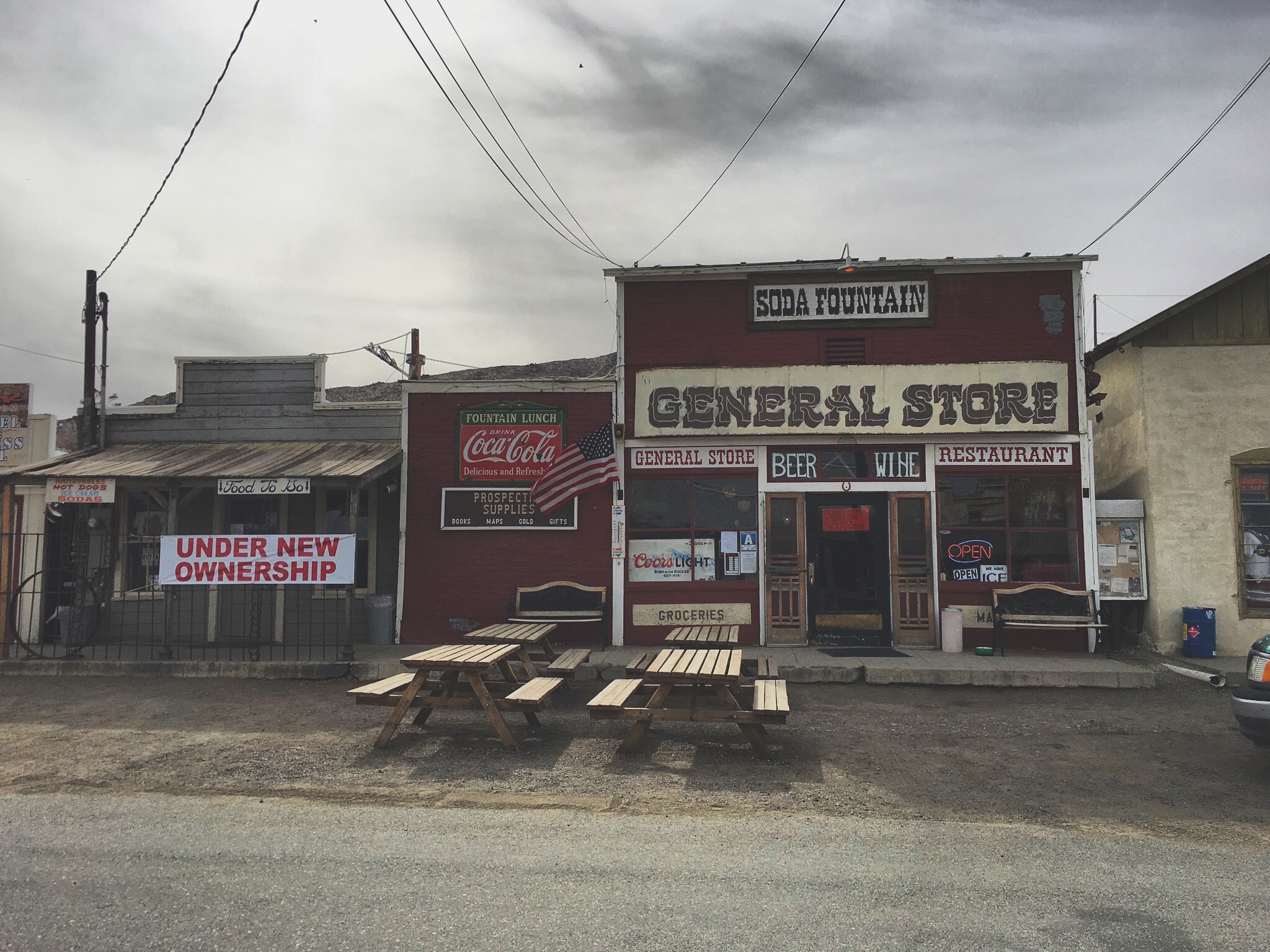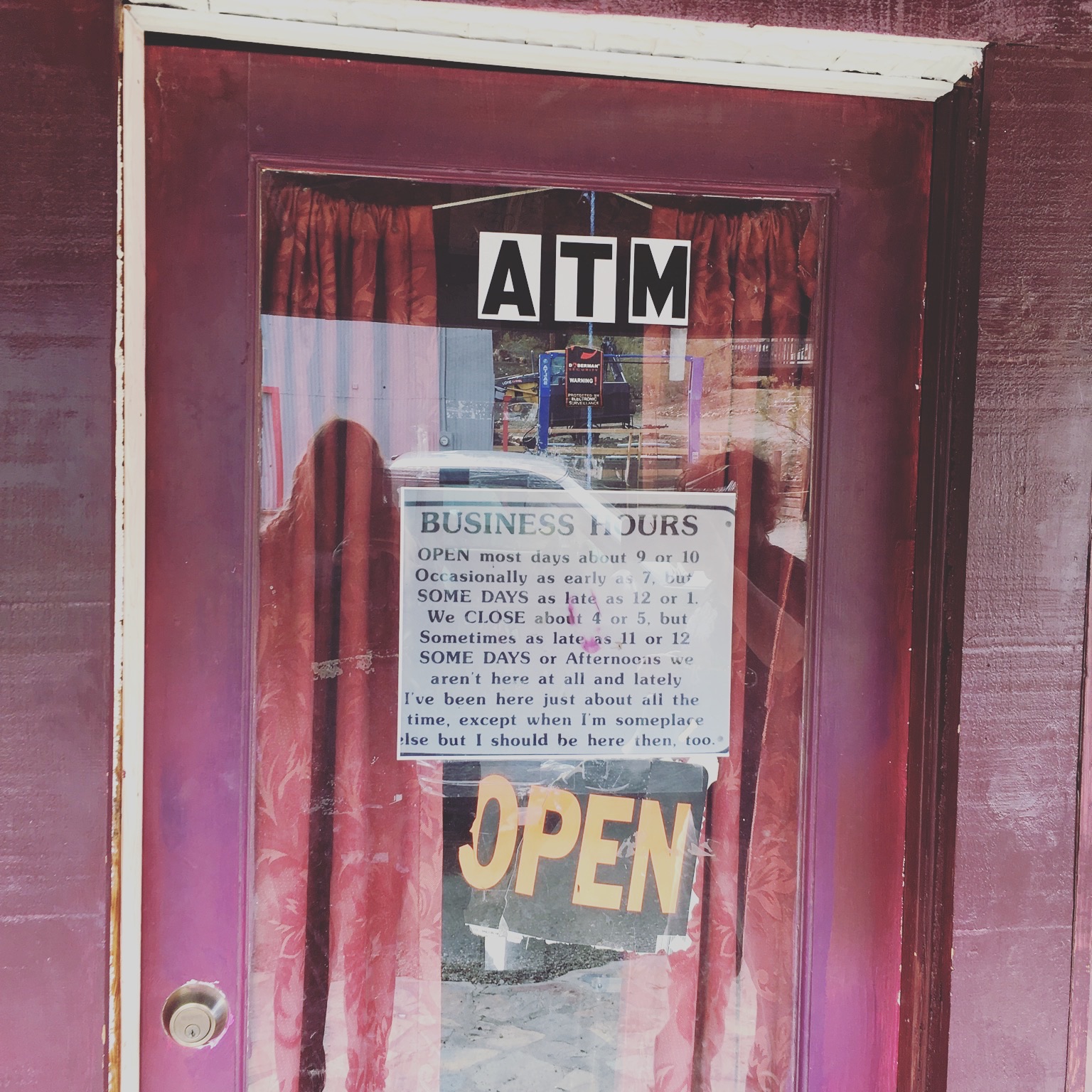 I am planning to cover the history and current state of the Randsburg Mining District as I saw it during our trip in Feb 2017.
I am planning to cover the history and current state of the Randsburg Mining District as I saw it during our trip in Feb 2017.
“Boys, we need not look any further, we have struck it rich.” Mr. Mooers, one of the founders
Visiting this area is a great experience for any fan of ghost towns - in couple of days you can visit the remaining ghost and semi-ghost towns of this area: Saltdale, Garlock, Ransburg, Johannesburg, Red Mountain, Atolia.
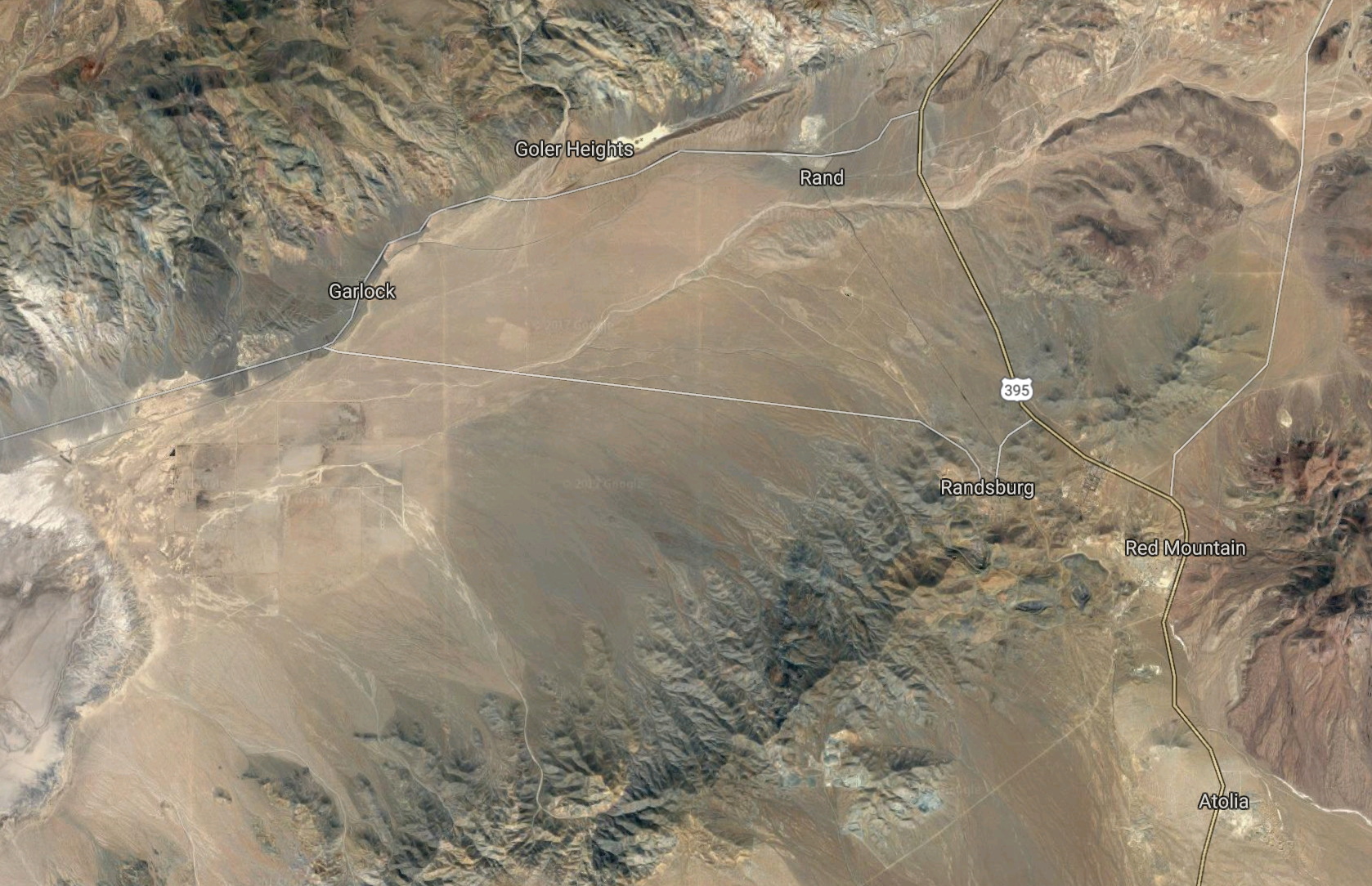
Randsburg is located along U.S. Highway 395 between Ridgecrest and Boron, California. It belongs to the Randsburg Mining District - gold mining belt of Kern county. Gold was discovered on the slope of Rand Mountain in 1895. From this discovery, the town of Randsburg sprang up almost overnight. By 1899, the town had over 3,500 residents.
Town early history
 Los Angeles Herald, Volume 26, Number 53, 22 November 1896
Los Angeles Herald, Volume 26, Number 53, 22 November 1896
That is how the Herald corresponded described Randsburg in 1896: “The townslte is situated in several gulches, principally the Rand and Fiddler’s gulches, and in its general appearance forcibly reminded the writer of Calico townslte during the tlrst year after that mining camp was started. The main part of the town is situated about half wa.y up Rand gulch and an intersecting street (much wider) that runs from Rand gulch to Fiddler’s gulch. Three-quarters of a mile south of the business part of the town is Rand mountain, the highest elevation in the vicinity, and in which range are situated the important Rand group of mines, and where gold was first discovered in the district.”(1)
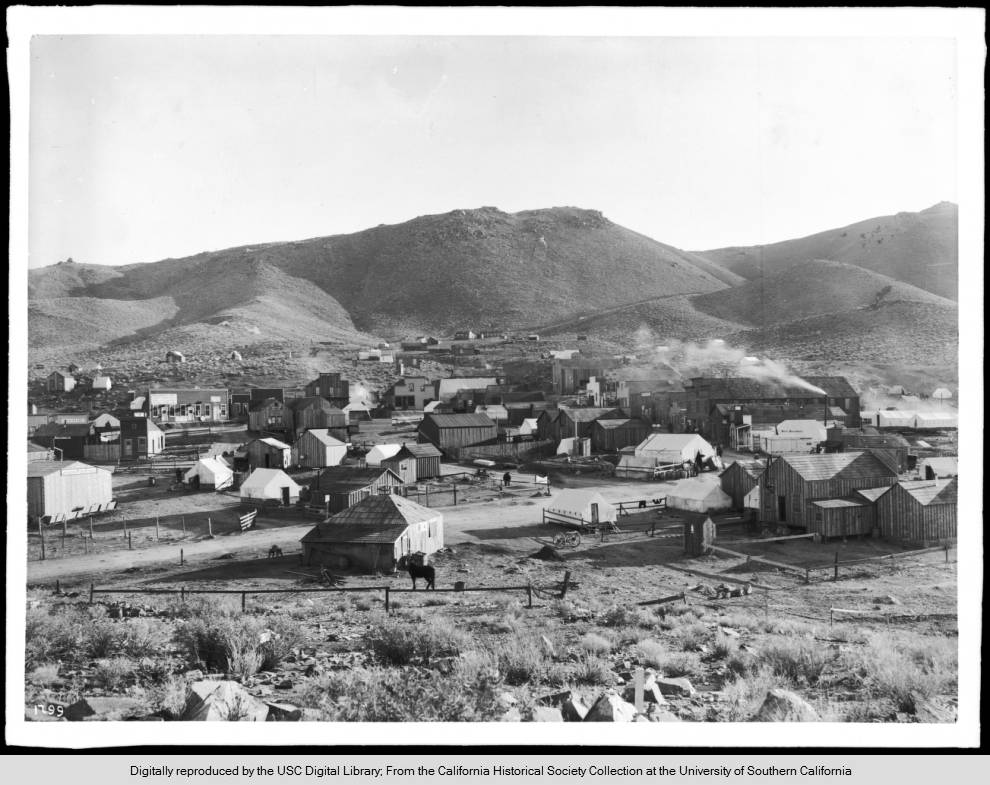 Panoramic view of the mining town of Randsburg, California, ca.1897
Panoramic view of the mining town of Randsburg, California, ca.1897
The correspondent also was able to interview one of the founders of the city and the first one who found gold In that vicinity - Mr. F. AI. Mooers.
“In conversation with Mr. Moofrs the following facts w, re elicited: Being a desert country and not showing surface indications of mineral weallth according to the ethics of experienced California miners, and, moreover, showing a section of countiy entirely devoid of water, prospectors never attempted to find mineral treasures in so barren and desolate a region. The first attempt to discover gold or silver In the district was made by Mr. Mooers and associate, w. J. Langdon, January Ist, 1894. They had been placer mining at Buttelmint, eight miles east of the present camp, and were led to believe by their success at Summit that they Would strike a good find at What is now Randsburg. Before they had prospected the district to any extent their supply of water gave out anil they abandoned their efforts. On April 22nd. 1895. Mr. Mooers and his associates. C. A. Burcham and John Singleton (now owners of the Rand Group of mines), made the tlrst discovery of gold-baring ore in a hutte on the present Rand mine, six feet above the surface. Mr. Mooers looked at the chunk of ore and remarked to the others: “Boys, we need not look any further; we have struck it rich.”The “chunk” proved to be worth $75, and was a worthy emblem of the now famous Rand group of mines, from which it was taken. As an illustration nf the valuable character of the ore in this group. Mr. Mooers stated that one pouttd avoirdupois of on from the Yellow Aster mine netted $2.90. A disinterested expert remarked, after a careful Inspection of this group of mines: “There is 360,000 tons of ore In sight there.” and Charles D. l.ane. the well known gold mine owner of this state, was so enthused over the splendid prospects of tills propi rty, after a thorough investigation of It. that he remarked: “Boys, you have a good thing—get a 100 stamp mill and shovel in the entire mountain, for It is all ore.”
Rand mine, called Yellow Aster was the biggest in the Rand district. Rand mine takes its name after South African mining district because it resembled a profusion of its minerals. The camp became Rand camp and later Randsburg. The boom was on and the little town quickly grew and developed to a population of about 2,500. The rush faded but silver and tungsten were found and the area lived on.
Randsburg today
Randsburg population is currently about 60 (2017) at an elevation of 3523 feet.
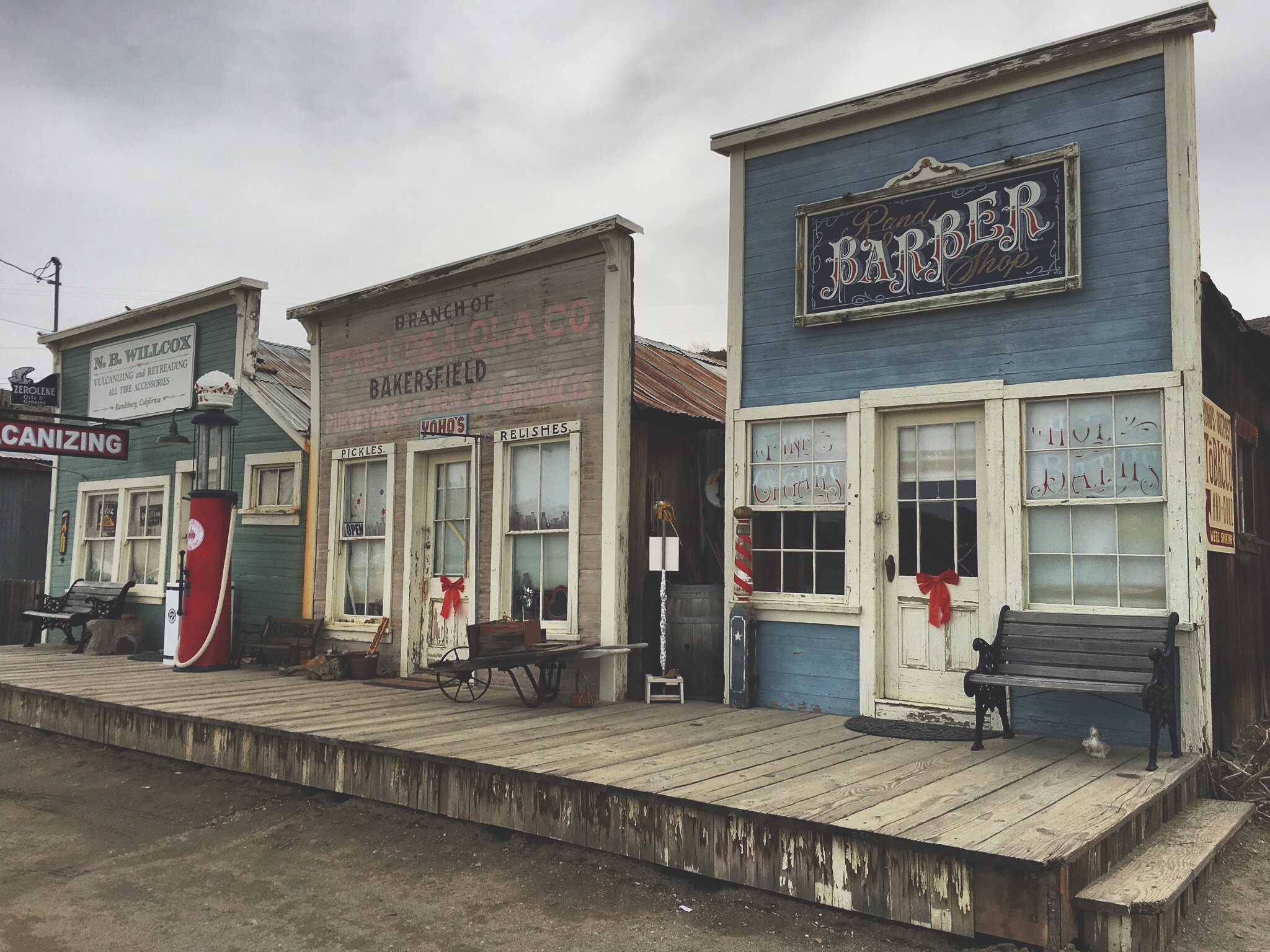
Gold production tapered off after the 1930s but didn’t stop entirely. It continued through the 1960s and still occurs intermittently on a small scale.
The lucrative Kelly Silver Mine, aka California Rand Silver Mine, was discovered in 1919 and was worked on a major scale through the 1930s. Tungsten, a strategic material, was mined during the first and second world wars.
Today Randsburg is a “living ghost town” with it’s own grocery store, several bars and a lot of occupied houses. Travelers can find and book some of the houses on Airbnb to spend a night. One of the attractions you can’t miss is the General store with a 1904 soda fountain inside.
